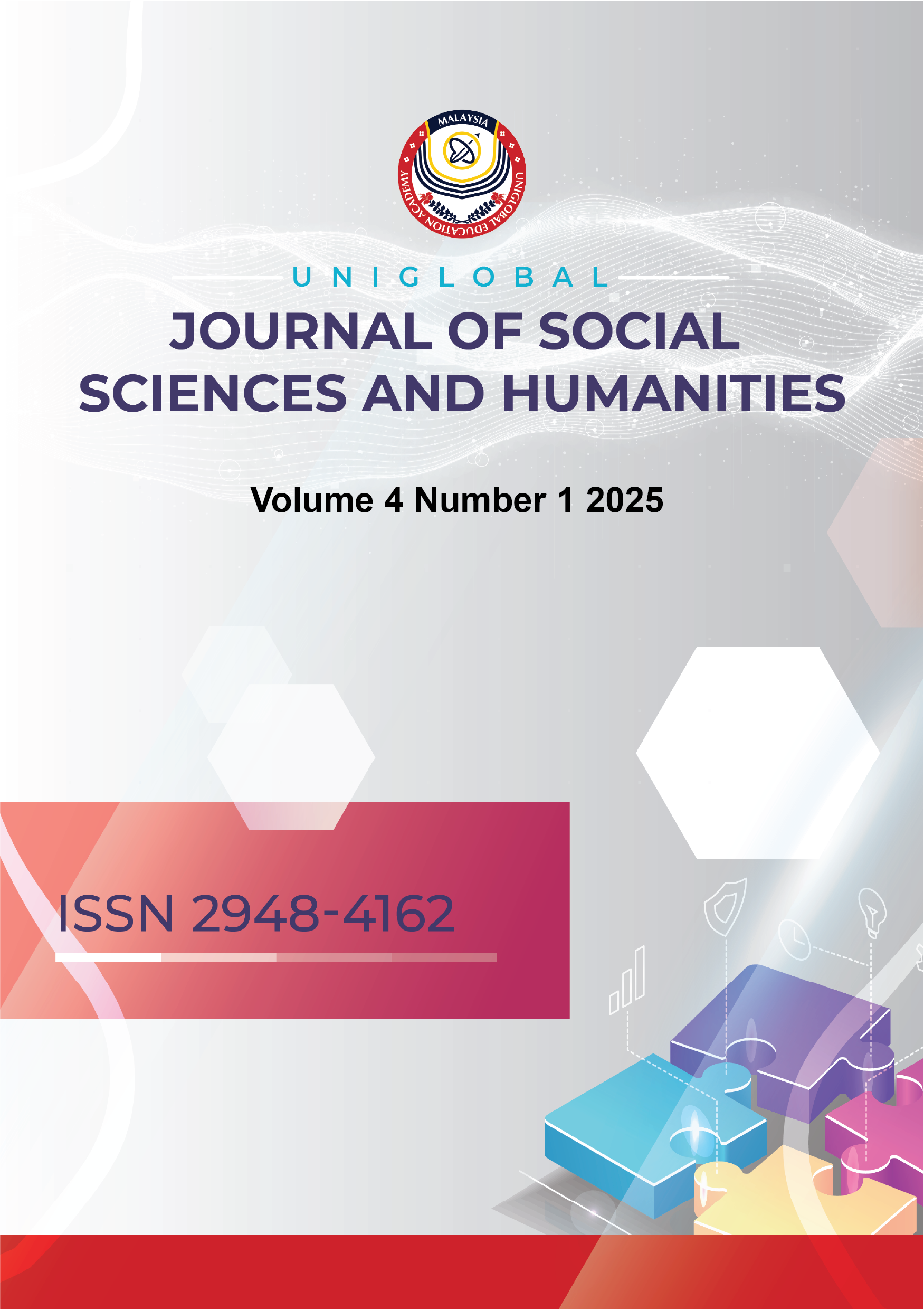From Start-Up to Scale-Up: Organizational Growth Challenges in Tech-Start-Ups in China
DOI:
https://doi.org/10.53797/ujssh.v4i1.17.2025Keywords:
Tech start-ups, Scaling challenges, Leadership development, Strategic partnerships, Talent retentionAbstract
This study explores the growth challenges and strategies of tech start-ups in China transitioning from start-up to scale-up. The research employs a quantitative approach, utilizing a survey of 250 participants representing various sectors such as e-commerce, fintech, software development, and artificial intelligence. The findings reveal that operational inefficiencies, difficulties maintaining product quality, talent acquisition and retention, financial constraints, and regulatory compliance are among the most significant challenges faced by scaling tech start-ups. Notably, 70% of respondents highlighted operational processes as a significant hurdle, followed by 75% citing talent recruitment issues. Strategies such as leadership development, strategic partnerships, competitive compensation packages, and adopting scalable technology solutions were employed to overcome these challenges. The data demonstrated that 80% of companies saw noticeable improvements through leadership training, while strategic partnerships and scalable technology solutions were effective for 70% and 68% of respondents, respectively. However, despite employer branding efforts, only 65% successfully attracted talent, with 20% finding retention problematic. These findings underscore the complex scaling landscape in the tech industry, revealing critical insights into the strategies that can enhance growth and operational efficiency. This study contributes to the literature by emphasizing the importance of integrated strategic approaches for overcoming scaling challenges. It offers practical implications for tech start-ups seeking sustainable growth in the competitive Chinese market.
References
Ates, A., & Acur, N. (2022). Making obsolescence obsolete: Execution of digital transformation in a high-tech manufacturing SME. Journal of Business Research, 152, 336–348. https://doi.org/10.1016/j.jbusres.2022.07.052
Banka, M., Chmiel, N., Kostrzewski, M., Marczewska, M., Arkadiusz Michal Kowalski, Katarzyna Sedkiewicz, & Mariusz Salwin. (2024). Understanding Corporate Concerns. Barriers and Challenges in Corporate–Start-up Collaboration. Journal of Open Innovation Technology Market and Complexity, 100388–100388. https://doi.org/10.1016/j.joitmc.2024.100388
Coviello, N., Autio, E., Satish Nambisan, Patzelt, H., & Llewellyn D.W. Thomas. (2024). Organizational scaling, scalability, and scale-up: Definitional harmonization and a research agenda. Journal of Business Venturing, 39(5), 106419–106419. https://doi.org/10.1016/j.jbusvent.2024.106419
Hagen, B., Ghauri, P. N., & Macovei, V. (2024). The balancing act: Organizational agility in fast-growing international ventures. Industrial Marketing Management, 123, 119–132. https://doi.org/10.1016/j.indmarman.2024.09.007
Hu, M., Dou, J., & You, X. (2023). Is organizational ambidexterity always beneficial to family-managed SMEs? Evidence from China. Journal of Business Research, 167, 114184. https://doi.org/10.1016/j.jbusres.2023.114184
Lyu, C., Zhang, F., Ji, J., Teo, T. S. H., Wang, T., & Liu, Z. (2022). Competitive intensity and new product development outcomes: The roles of knowledge integration and organizational unlearning. Journal of Business Research, 139, 121–133. https://doi.org/10.1016/j.jbusres.2021.09.049
Oihana, B. R. de A., Vicente J, M. G., & Fernando, M.-B. (2025). Non-Hierarchic Leadership Collaboration: Exploring the Adoption of AI-Driven Social Networking for Addressing Social Challenges in an Extra-Organizational Environment. Technology in Society, 102809. https://doi.org/10.1016/j.techsoc.2024.102809
Qaiyum, S., & Wang, C. L. (2018). Understanding internal conditions driving ordinary and dynamic capabilities in Indian high-tech firms. Journal of Business Research, 90, 206–214. https://doi.org/10.1016/j.jbusres.2018.05.014
Shields, M., James, D., & McCormack, L. (2024). Organisational challenges to wellbeing in nuclear medicine technologists: Professionalism, burnout and pragmatic growth. Radiography, 30(2), 622–627. https://doi.org/10.1016/j.radi.2024.01.018
Siachou, E., Vrontis, D., & Trichina, E. (2021). Can traditional organizations be digitally transformed by themselves? The moderating role of absorptive capacity and strategic interdependence. Journal of Business Research, 124, 408–421. https://doi.org/10.1016/j.jbusres.2020.11.011
Tolin, G., & Piccaluga, A. (2025). Commercializing technology from university-industry collaborations: A configurational perspective on organizational factors. Journal of Business Research, 188, 115105. https://doi.org/10.1016/j.jbusres.2024.115105
Xiao, Y. (2025). Pathways to scaling up in emerging economies: A configurational analysis of organizational capabilities in social enterprises. Journal of Business Research, 189, 115091. https://doi.org/10.1016/j.jbusres.2024.115091
Yuan, R., Luo, J., Liu, M. J., & Yu, J. (2022). Understanding organizational resilience in a platform-based sharing business: The role of absorptive capacity. Journal of Business Research, 141(1), 85–99. https://doi.org/10.1016/j.jbusres.2021.11.012
Zhang, L. E., Zhao, S., Kern, P., Edwards, T., & Zhang, Z.-X. (2022). The pursuit of indigenous innovation amid the Tech Cold War: The case of a Chinese high-tech firm. International Business Review, 32(6), 102079. https://doi.org/10.1016/j.ibusrev.2022.102079
Downloads
Published
How to Cite
Issue
Section
License
Copyright (c) 2025 Yifan Gong, Mohd Yusof Abdullah

This work is licensed under a Creative Commons Attribution-NonCommercial-ShareAlike 4.0 International License.



